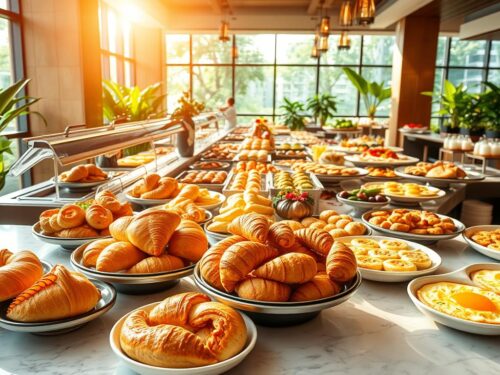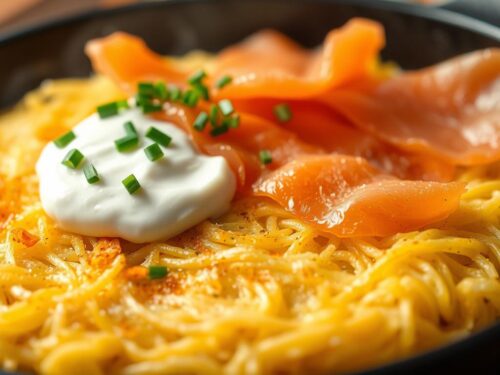Omakase, meaning “I trust you” in Japanese, is a culinary journey where chefs craft personalized menus using seasonal ingredients. This tradition has found a vibrant home in Singapore, blending authenticity with modern creativity.
The city offers diverse dining experiences, from intimate counters to Michelin-starred venues. Chefs showcase their expertise through artfully prepared sushi and rare ingredients, ensuring each meal feels exclusive.
In 2021, several spots stood out by balancing tradition and innovation. Whether you seek affordable luxury or ultra-premium options, Singapore’s omakase scene delivers unforgettable flavors.
Key Takeaways
- Omakase means trusting the chef’s selection for a unique meal.
- Singapore’s dining scene excels in blending tradition with creativity.
- Menus highlight seasonal ingredients and chef expertise.
- Options range from budget-friendly to high-end experiences.
- Locations span across the city, offering convenience and variety.
What Makes Omakase a Unique Dining Experience?
The magic of omakase lies in its unpredictable yet masterfully curated courses. Unlike fixed menus, each dining experience reflects the chef’s expertise and the freshest seasonal finds. This tradition, rooted in post-WWII Japan, lets diners enjoy meals without hesitation—trusting the chef’s choices entirely.
The Art of Trusting the Chef
At its core, omakase is about surrender. Diners sit at counters, watching chefs transform ingredients into edible art. The interaction is intimate—questions are encouraged, and preferences are noted. This setup honors Japan’s cultural value of shokunin, or craftsmanship.
Historically, omakase allowed guests to avoid embarrassment over fish knowledge. Today, it’s a showcase of skill. Chefs balance flavors, textures, and presentation, often tailoring dishes to individual reactions.
Seasonal Ingredients and Personal Attention
Freshness is non-negotiable. Many restaurants source fish daily from Tokyo’s Toyosu Market, ensuring peak quality. Menus shift with the seasons—spring might highlight cherry blossom-infused dishes, while winter features rich, fatty cuts.
Courses follow a deliberate rhythm: sashimi, grilled items, nigiri, and dessert. Each plate emphasizes the chef’s technical mastery, from knife work to temperature control. Compared to Western tasting menus, omakase feels more personal—like a conversation through food.
- Etiquette tip: Sit near the counter to fully engage with the chef.
- Progression: Expect 10-20 courses, lasting 1.5–2 hours.
- Adaptations: Singapore’s venues blend tradition with local influences.
Kakushin: A Gastronomic Journey in Scotts Square
Scotts Square hides a gem where ingredients become art under Chef Chan’s guidance. This intimate restaurant, opened in 2021, blends Edomae traditions with modern flair. Diners witness each course crafted at the counter, creating a seamless connection between chef and guest.
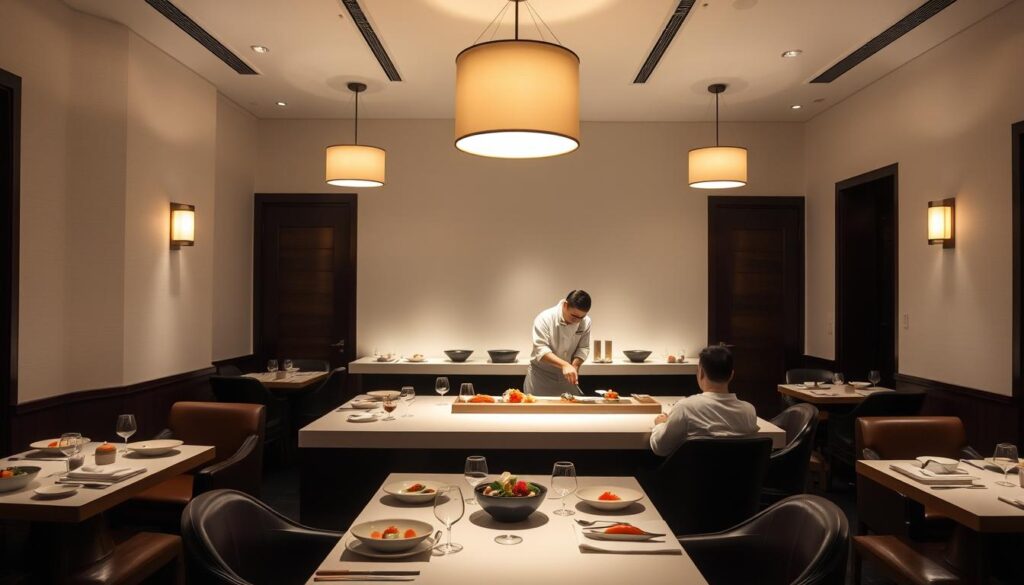
Chef Chan’s Signature Creations
As the head chef, Chan elevates classics like Awabi (abalone) with rich liver sauce. His Uni toast layers creamy sea urchin on crispy brioche, while A5 Wagyu arrives perfectly charred. A standout is the Snow Crab paired with Uni Chawanmushi—a silky egg custard that melts on the tongue.
“Every dish should tell a story, from the first bite to the last,” says Chef Chan.
Premium Ingredients from Toyosu Market
The premium ingredients arrive via daily flights from Tokyo’s Toyosu Market. Seasonal vegetables come from partnered farms in Hokkaido and Kyoto. This ensures even the wasabi is freshly grated, enhancing the omakase menu’s authenticity.
- Seafood: Tuna is aged for optimal texture, while scallops are hand-selected.
- Produce: Microgreens and edible flowers add vibrant accents.
- Presentation: Ceramic tableware mirrors Japan’s rustic elegance.
Price Range and Reservation Details
Expect to invest $200–$300++ per person, with dinner offering more elaborate courses. Reservations open 30 days ahead, and the 10-seat counter fills quickly. For special occasions, request the anniversary setup—a curated experience with personalized touches.
Shinsora: Intimate 10-Seater Omakase
Tucked away in Odeon Towers, Shinsora offers an exclusive dining encounter with just ten seats. The compact counter lets guests witness Chef Sky Tai Koon Siang’s artistry up close, blending precision with warm hospitality.
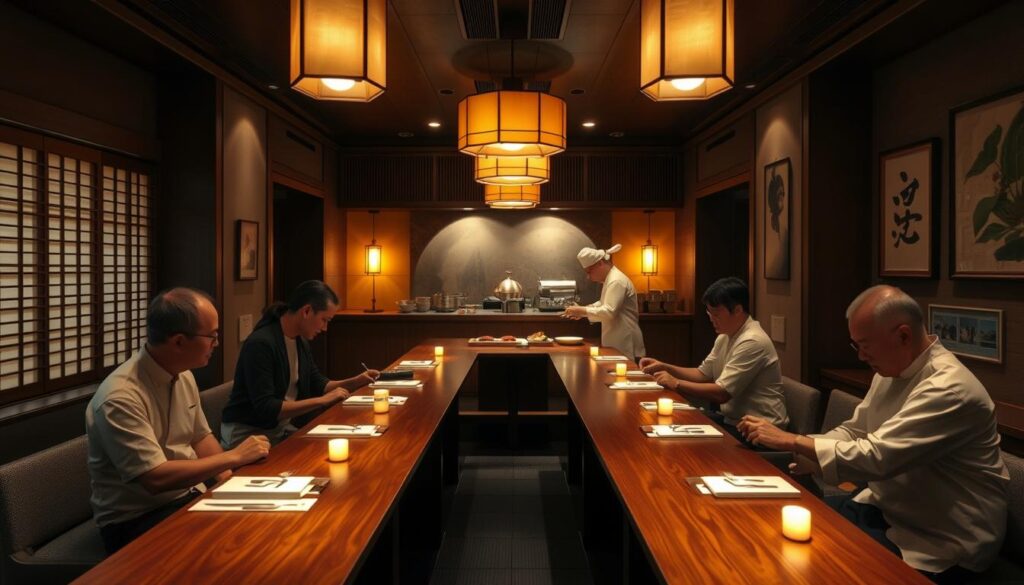
Sky Tai Koon Siang’s Award-Winning Sushi
Chef Sky Tai’s accolades include top honors at Tokyo’s Sushi Masters competition. His signature Matsukawagarei flounder is aged for tenderness, while torched Nodoguro (blackthroat seaperch) melts with smoky richness.
The small seating capacity ensures personalized service. Diners often receive off-menu treats, like Chef Tai’s famed Caviar with Hasu Imo—a creamy lotus root pairing that contrasts textures brilliantly.
Lunch Menu Highlights
Lunch menus start at $90++ for a 9-piece course, scaling to $200++ for a 15-piece feast. Seasonal picks like mackerel compete with luxe additions like Hokkaido abalone. Artisanal teas, such as Uji matcha, complement the meal’s delicate flavors.
- Reservations: Weekdays offer more flexibility; weekends book out weeks ahead.
- Counter Etiquette:> Ask questions—Chef Tai enjoys sharing knife skills demos.
- Takeaway: During restrictions, curated bento boxes featured premium ingredients.
“A great omakase isn’t just about fish—it’s about rhythm, temperature, and trust,” says Chef Tai.
Hashida: A Reimagined Omakase Experience
Step into Hashida and experience a dining ritual inspired by Japanese shrine pathways. Relocated to 77 Amoy Street, the restaurant’s sandō concept mimics the approach to sacred spaces, with a torii gate marking the entrance. This design sets the tone for a meal that blends reverence with culinary artistry.

The Sandō Concept and Dining Rooms
Three themed rooms—Ei (12 seats), Bi (8 seats), and Ou (7 seats)—offer distinct atmospheres. Ei features minimalist cedar counters, while Bi’s dark wood evokes intimate tea ceremonies. The smallest, Ou, is reserved for private events, adorned with handcrafted tableware.
Chef Atsushi Kuroki balances flavors using gin salt accents and aged fish. His monkfish liver (ankimo) is a standout, whipped with sake lees for a creamy texture. Each room’s ambiance complements the 18-course progression, from sashimi to dessert.
| Room | Seats | Atmosphere | Best For |
|---|---|---|---|
| Ei | 12 | Minimalist, bright | Groups |
| Bi | 8 | Intimate, dark wood | Couples |
| Ou | 7 | Private, luxurious | Special occasions |
Must-Try Dishes: Hand-Carved Otoro
The showstopper is the hand-carved otoro, sliced from a whole tuna display. Chef Hashida’s carving ceremony highlights knife skills honed in Tokyo. Paired with freshly grated wasabi, the fatty tuna melts with a hint of quality soy sauce.
Dessert features a trio: seasonal Japanese fruits, sakura jelly, and matcha ice cream. For celebrations, the team customizes menus—think truffle-infused courses or premium omakase menus with sake pairings.
“The sandō isn’t just a path—it’s a journey through taste and tradition,” says Chef Kuroki.
Post-reopening, Hashida implemented contactless menus and spaced seating. Yet, the experience remains immersive, proving innovation thrives even in challenging times.
Shoukouwa: Michelin-Starred Excellence at One Fullerton
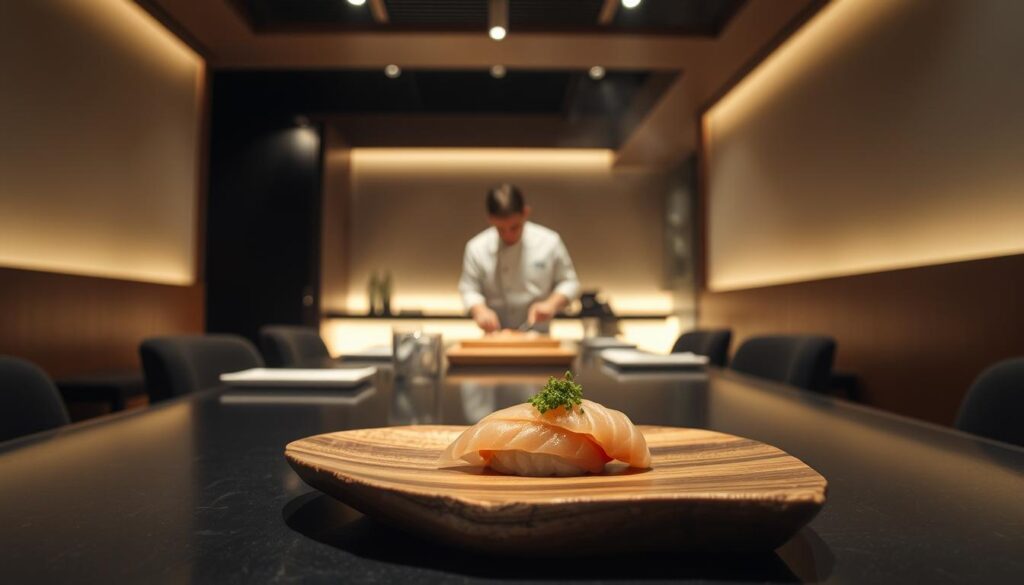
Two Michelin stars shine brightly at Shoukouwa, where Tsukiji Market’s treasures meet Edomae mastery. Since 2016, this harborfront gem has redefined luxury dining with its 8-seat counter and Wine Advocate-rated sake pairings.
Edomae Sushi Tradition
Chef’s precision begins at dawn—selecting tuna at Tsukiji auctions and aging it for optimal texture. Winter menus spotlight Hokkaido crab, while summer celebrates uni’s creamy richness. Each nigiri reflects centuries-old techniques, like vinegar-marinated mackerel pressed between warm rice.
“Aging fish is like composing music—timing transforms good ingredients into harmony,” shares the chef during tastings.
Daily Flights from Tsukiji Market
Twice-weekly shipments ensure even the wasabi is freshly grated. The Hana menu ($480++) features 12 courses, while En ($650++) adds rare finds like quality otoro hand-carved tableside. Sommeliers recommend dry sakes to cut through fatty flavors.
- Ambiance: Floor-to-ceiling windows frame Marina Bay’s skyline.
- Special occasions: Champagne welcomes and custom dessert plates.
- Safety: Contactless menus and UV-sanitized tableware post-2020.
Reservations for dinner open 60 days ahead, averaging $320++ per person. For regulars, the chef’s notebook tracks preferences—proof that trust is Shoukouwa’s secret ingredient.
Sushi Mitsuya: Affordable Luxury on Tras Street
Tras Street welcomes a modern twist on Edomae traditions at Sushi Mitsuya. This intimate spot balances innovation with timeless techniques, offering an omakase menu that delights without breaking the bank. Head chef Ryosuke Harada, trained in Tokyo’s elite kitchens, crafts each course with precision.
Chef Ryosuke Harada’s Modern Edomae Style
Chef Harada’s Tokyo roots shine in dishes like tuna aged with tare sauce and sesame salt. His hinoki wood counter, polished daily, reflects Japanese reverence for materials. Regulars rave about the mini don courses—seasonal rice bowls topped with anything from spring cherry blossoms to winter crab.
“Edomae is about respect for ingredients, but modern palates crave surprise,” says Chef Harada.
Uni and Ikura Don Highlight
The signature uni and ikura don layers creamy sea urchin over pearl-like salmon roe. Available year-round, its recipe adapts to seasonal catches. Pair it with a shochu cocktail—bartenders recommend yuzu-infused blends to cut the richness.
| Service | Price (++) | Courses | Best For |
|---|---|---|---|
| Lunch | $90 | 9 pieces | Quick indulgence |
| Dinner | $180 | 15 pieces | Special occasions |
Dinner service features rare finds like abalone liver sauce, while lunch offers value with streamlined portions. Walk-ins are rare—reserve ahead for counter seats to watch the chef’s knife skills. During restrictions, their takeaway bento boxes featured the same quality ingredients.
- Loyalty perk: Regulars get seasonal off-menu tastings.
- Soy sauce: Aged in-house for 6 months for deeper flavor.
- Seating tip: Corner seats offer the best prep views.
The Gyu Bar: A Wagyu-Centric Omakase Adventure
Forget everything you know about steak dinners—The Gyu Bar redefines luxury with its beef-focused omakase concept. Here, wagyu beef transforms into edible art through eight carefully orchestrated acts. Each course celebrates Japan’s diverse terroir, from Kagoshima’s lush pastures to Hokkaido’s snowy ranges.
Exploring 7 Japanese Prefectures Through Beef
Chefs showcase regional distinctions like Miyazaki’s citrus-fed cattle versus Shimane’s mineral-rich breeds. Dry-aging techniques enhance the marbling, with 21-day maturation being the sweet spot for texture. The yakiniku (grilled) and tataki (seared) preparations highlight different fat-rendering properties.
During butchery demos, guests learn grading systems—A5 isn’t the end goal, but rather balanced BMS scores. Seasonal touches like winter truffles or spring sansho pepper elevate the natural flavors. Private rooms accommodate groups of six, ideal for curated sake pairings.
8-Course Omakase Menu
The $238++ per person menu begins with delicate beef tartare and crescendos with a 200g ribeye finale. Standouts include:
- Kagoshima: Charcoal-seared sirloin with smoked sea salt
- Furano: Milk-fed tenderloin tataki with wasabi foam
- Vegetarian: Mushroom medley with truffle dashi (available on request)
Reservations require 24-hour notice—time needed to thaw specific cuts properly. Post-meal, bartenders recommend umeshu plum wine as a digestif. This isn’t just dinner; it’s a carnivorous journey through Japan’s most celebrated pastures.
“Great wagyu speaks for itself—our role is to amplify what the cattle farmers perfected,” explains the head chef during tastings.
NAMI: Sky-High Omakase at Shangri-La Hotel
Elevated above the city’s bustle, NAMI offers a dining experience where skyline views meet culinary artistry. Perched on the 24th floor, this intimate venue pairs panoramic vistas with Chef Shigeo Akiba’s seasonal mastery. Every detail, from the private elevator access to the handcrafted tableware, reflects Japanese precision.
Chef Shigeo Akiba’s Seasonal Selections
Chef Akiba’s menu evolves with Japan’s microseasons, featuring rare finds like winter Hokkaido hairy crab. His fish-aging techniques—controlled at precise temperatures—ensure optimal texture. Sunset diners enjoy golden-hour highlights, such as torched otoro brushed with house-aged soy sauce.
The $240++ tasting includes optional sake pairings ($99++), curated by an in-house sommelier. For anniversaries, request the bespoke package with champagne toasts and custom-engraved chopsticks.
Dashi Menu Special
NAMI’s $180++ dashi-focused menu showcases broth simmered from 3-day kombu and bonito flakes. Served in artisan lacquerware, it accompanies delicate dishes like snow crab chawanmushi. Post-COVID upgrades include enhanced ventilation, ensuring safety without compromising the experience.
- View perks: Marina-facing seats offer fireworks visibility during festivals.
- Ingredients: Daily deliveries of Toyosu Market seafood and Kyoto vegetables.
- Exclusivity: Only 12 counter seats, with reservations opening 60 days ahead.
“At this height, every bite should feel like a celebration,” says Chef Akiba, plating Hokkaido uni with edible gold.
Shinji by Kanesaka: Sublime Michelin-Starred Sushi
Michelin-starred excellence meets tradition at Shinji by Kanesaka, where every bite tells a story. This iconic brand brings Tokyo’s quality standards to Singapore, offering an omakase-only experience across two elegant locations.
Carlton vs. St. Regis Outlets
Carlton Hotel’s outlet features a minimalist hinoki wood counter, seating just 10 guests. St. Regis counters are darker, with gold-leaf accents reflecting its luxury ethos. Chefs rotate weekly, ensuring consistency between venues.
- Interior: Carlton’s light cedar vs. St. Regis’s opulent gold.
- Chef rotation: Teams swap to maintain flagship standards.
- Exclusivity: Both locations prioritize intimate dining.
Chef’s Special Omakase Courses
Menus ($300–$500 per person) spotlight rare finds like Golden sea bream, aged for tenderness. Tempura courses showcase feather-light batter, fried at precise 180°C. Sushi rice is kept at body temperature for optimal texture.
“The rice’s warmth should complement the fish, not overpower it,” explains the head chef during prep demos.
Anniversary menus include custom engravings and premium sake pairings. Post-meal, kimono-clad staff guide guests through a matcha ceremony, echoing Tokyo’s rituals.
Ki-sho: Kyoto-Inspired Omakase in a Heritage Setting
Nestled in a restored colonial bungalow, Ki-sho blends Kyoto’s culinary traditions with Singapore’s heritage charm. The black-and-white architecture, preserved under strict guidelines, adds historical depth to each course. Here, Chef Hamamoto’s kaiseki training shines through meticulously plated dishes.
Chef Hamamoto’s Seasonal Seafood and Wagyu
The menu spotlights premium ingredients like Ensui Bafun uni and wagyu beef from Kyoto. Winter brings richly marbled cuts, while summer features lighter seafood like shirako (cod milt). Chef’s signature dish—seared wagyu with truffle-infused soy—melds French techniques with Japanese precision.
Sake pairings focus on Kyoto breweries, with rare labels like Dassai 45. Loyalty members enjoy off-menu tastings, such as aged tuna with yuzu kosho.
Private Dining Rooms
Ki-sho’s intimate rooms cater to special occasions, blending tatami mats with modern comforts. The japanese restaurant requires a minimum spend ($1,500++) for exclusivity, ideal for proposals or corporate events.
| Service | Price (++) | Highlights |
|---|---|---|
| Lunch | $150 | 7-course, seasonal wagyu |
| Dinner | $300 | 12-course, premium sake pairings |
“Heritage spaces demand respect—just like the ingredients we serve,” says Chef Hamamoto during a wagyu carving demo.
- Wedding setups: Customized menus with engraved chopsticks.
- Seasonal tableware: Lacquerware in winter, ceramic in summer.
- Ingredient ratio: 60% Kyoto-sourced, 40% Hokkaido seafood.
Conclusion: Your Ultimate Omakase Singapore 2021 Guide
From sky-high venues to intimate counters, this curated list showcases diverse dining experiences for every taste. Whether indulging in aged wagyu or fresh uni, each restaurant crafts memorable moments through chef-driven creativity.
Budget-friendly options start at $90++, while premium menus reach $650++. For Instagram-worthy dishes, try the torched otoro at Hashida or Gyu Bar’s wagyu tartare. Seasonal ingredients ensure year-round surprises—book winter for rich crab or summer for delicate sea urchin.
Luxury food spots have adapted with contactless menus and spaced seating. Gift vouchers make perfect presents, and early reservations secure counter seats. Trust the chefs, savor each bite, and dive into this culinary adventure.


